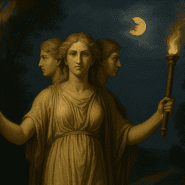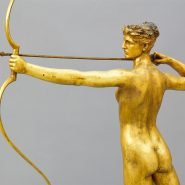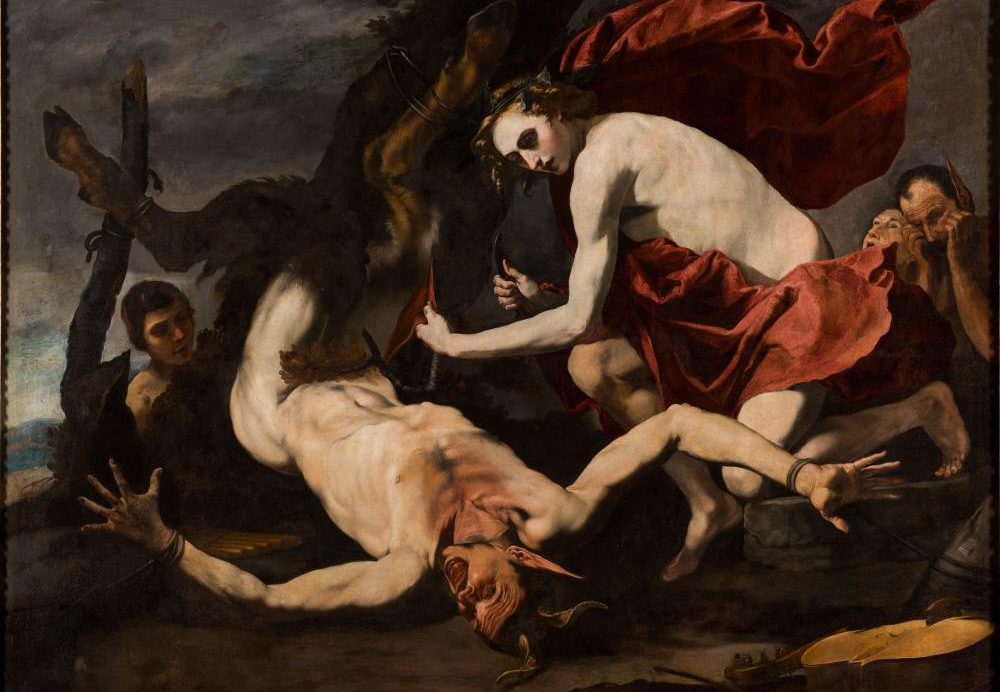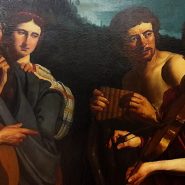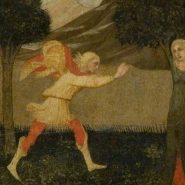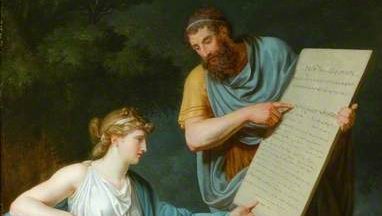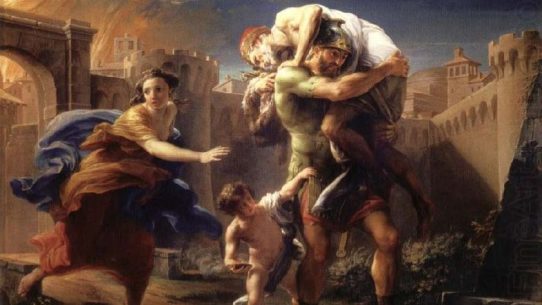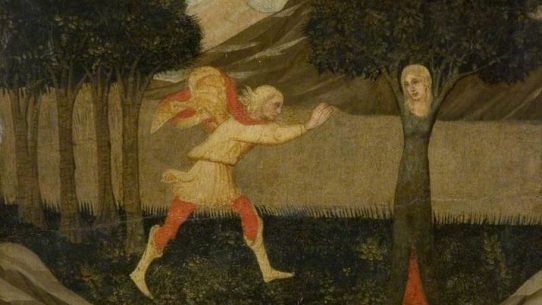Marsyas, the satyr who dared to challenge Apollo, stands as one of antiquity’s starkest symbols of pride against perfection.
His story, retold in Ovid’s Metamorphoses and echoed throughout Roman moral philosophy, explores the tension between freedom and discipline, emotion and order.
The contest between Marsyas and the god of music is more than a duel of sound — it is a parable of the human spirit tested against divine measure.
Characters and Setting
Marsyas was a satyr, half man and half goat, dwelling among the wild hills of Phrygia. Joyful and unrestrained, he played the double-flute, or aulos, with a passion that stirred nymphs and shepherds alike. His skill came from chance and pride intertwined.
Minerva, goddess of wisdom, had once invented the flute but cast it aside after seeing her face distorted while she played. Marsyas found the discarded instrument and, believing his talent divine, boasted that he could play as beautifully as Apollo himself. In this boast began his undoing.
The Challenge
Word of the satyr’s arrogance reached Olympus, and Apollo descended, radiant with calm confidence. The god accepted the challenge, not out of anger but to reveal the limits of mortal pride. The contest was held before the Muses, who would judge the victor.
At first, Marsyas’s performance dazzled the crowd — his music wild and full of life, echoing the pulse of nature itself. But when Apollo played, order returned to chaos. His notes shimmered with clarity, weaving patterns so pure that the wind itself fell silent. The satyr, sweating and trembling, felt both admiration and envy.
The Second Trial
Unwilling to concede, Marsyas demanded another round. Apollo agreed, on one condition: they would play their instruments upside down.
The god, whose lyre obeyed him effortlessly, produced flawless harmony. Marsyas, struggling with his flute, could make no sound at all.
In that silence, his defeat became complete. Yet Apollo’s victory was not without sadness; the contest had been less a battle of skill than a revelation of divine law — that art without measure collapses into noise, and pride without humility turns to suffering.
The Punishment
Apollo bound Marsyas to a tree, declaring that he would strip from him not only arrogance but illusion. As the god flayed the satyr, the forest wept, and even the river nearby took pity, flowing slower as though mourning.
From Marsyas’s blood rose a stream that would bear his name, its waters clear yet tinged with sorrow. The punishment, harsh though it seemed, was interpreted by Roman thinkers as purification — the painful shedding of ignorance before the truth of divine order.
In Marsyas’s agony, passion met its limit, and discipline reclaimed its throne.
Symbolism and Interpretation
To the Romans, the myth of Marsyas expressed the philosophy that balance defines greatness. Marsyas’s music represented freedom, emotion, and instinct — powerful forces that, when left unchecked, turn destructive. Apollo’s music symbolized reason, proportion, and self-control, the qualities that transform talent into virtue.
The flaying of Marsyas, while cruel, embodied the moral stripping away of arrogance and excess. His river, flowing from pain, symbolized renewal through suffering — that knowledge is born not of victory but of recognition. The myth warns that rebellion against harmony, however spirited, ends in dissonance.
Cultural Legacy
In Roman art, Marsyas appeared frequently in public squares and fountains, not as a monster but as a mirror. His bound figure reminded citizens that pride must bow before order, that liberty without wisdom becomes tyranny of the self.
Philosophers saw in Apollo’s act the discipline that shapes art and empire alike. Later poets found in Marsyas a tragic dignity — the artist who loved freedom so deeply he forgot its limits.
His name survived in the river that bore his lament, a quiet hymn to the necessity of proportion in a world ruled by the gods.
Gods involved: Apollo, Minerva
Based on classical sources in the public domain, including Ovid’s Metamorphoses and related translations available via Project Gutenberg and Wikisource.
